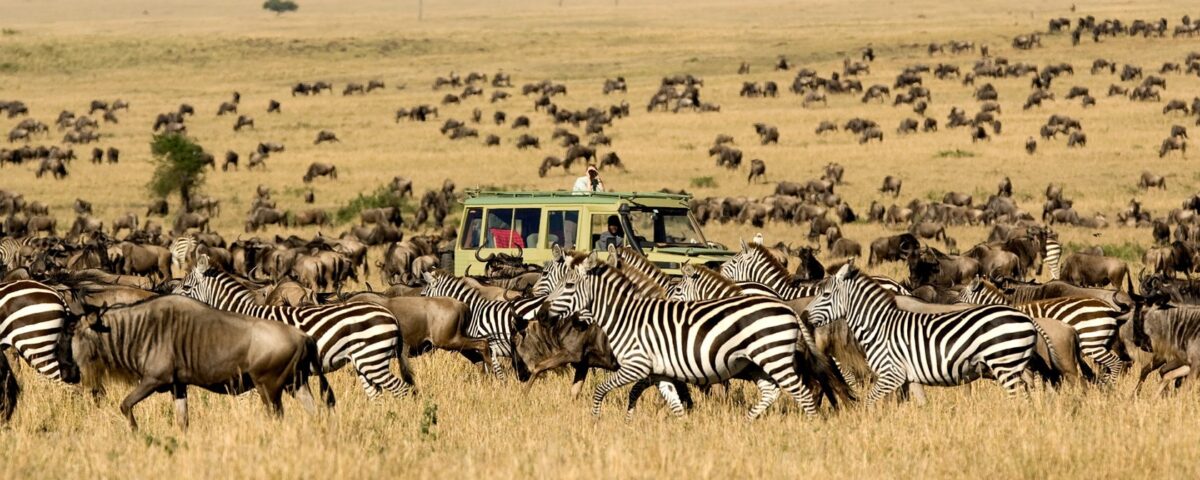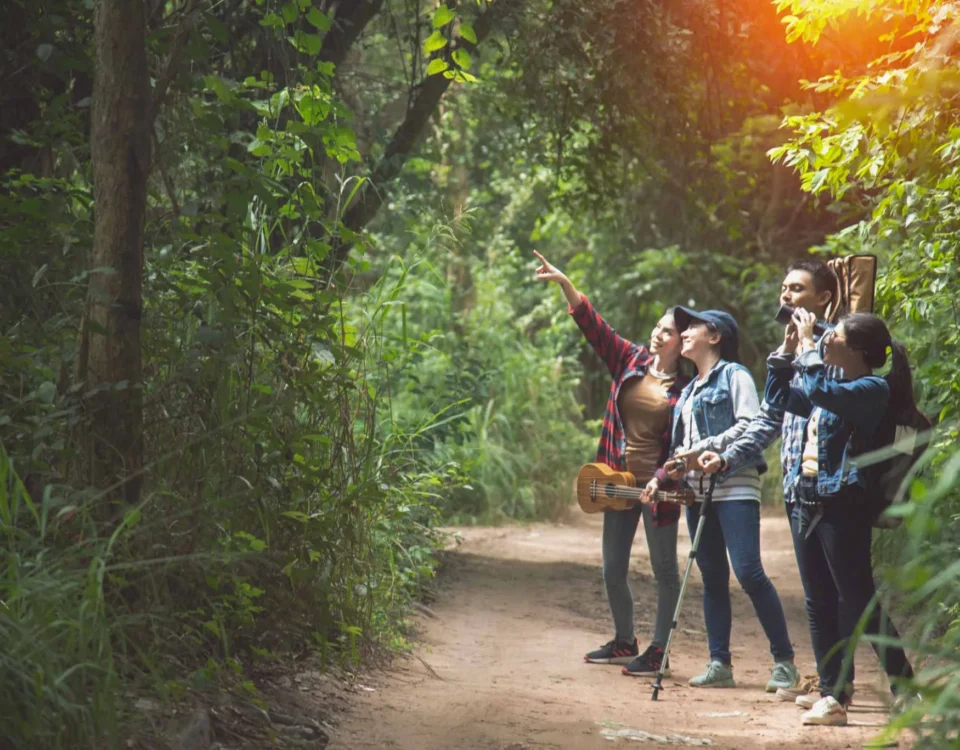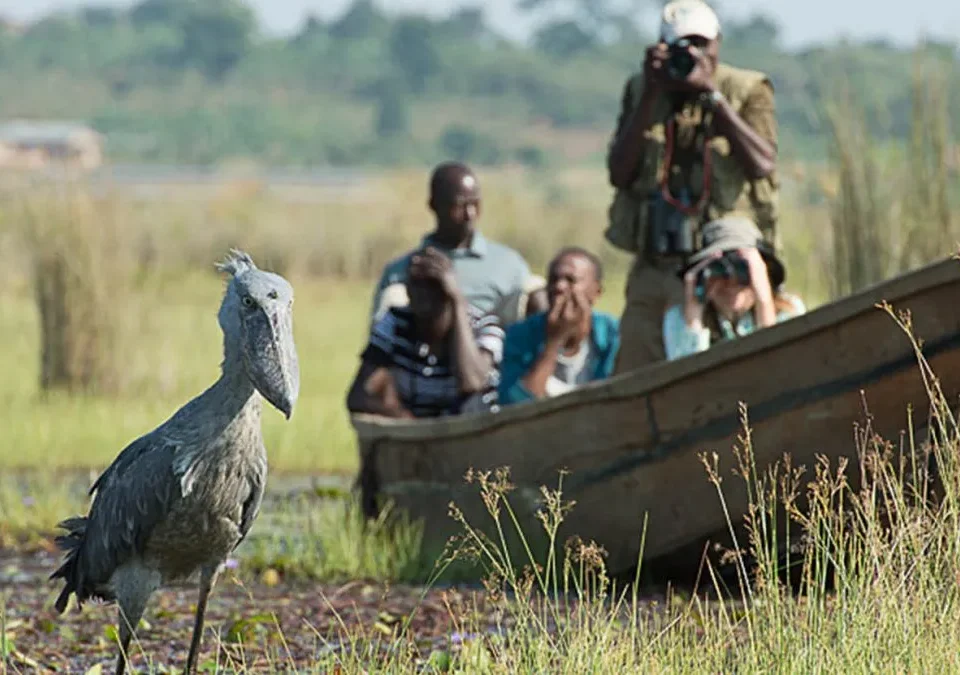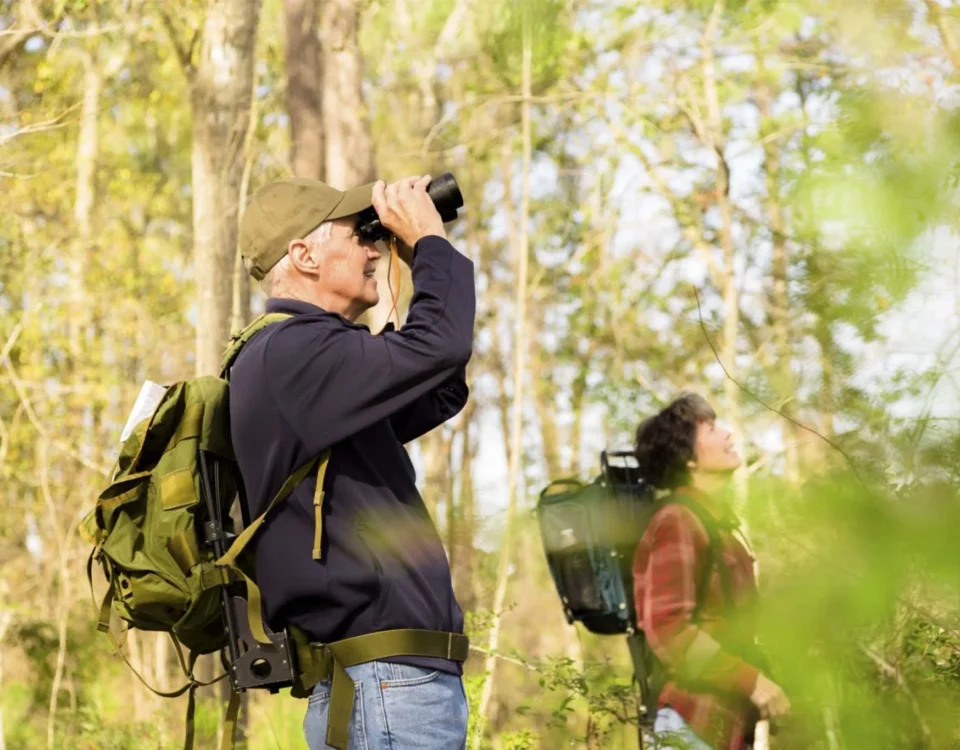
What is a Birding Safari, and How Is It Different from a Regular Wildlife Safari?
November 13, 2025Are Armed Rangers Provided During Chimpanzee Tracking?
November 13, 2025Is It Better to Fly or Drive Between Parks During the Great Migration?
Is it better to fly or drive between parks during the Great Migration, and how can travelers maximize their safari experience in East Africa? The Great Migration, one of the most remarkable wildlife spectacles in the world, spans across Kenya and Tanzania. Millions of wildebeest, zebras, and other herbivores traverse the Serengeti-Masai Mara ecosystem in search of fresh grazing and water, creating unforgettable Kenya Safaris and Tanzania Safaris experiences. Each year, this cyclical movement offers travelers a unique opportunity to witness dramatic predator-prey interactions, river crossings, and breathtaking landscapes.
Murchison Falls Safaris provides expert advice for travelers planning itineraries during the Great Migration, helping them decide between flying or driving between parks. Both options offer distinct advantages, depending on timing, budget, and personal preferences. Flying reduces travel time between key sites, allowing visitors to maximize wildlife encounters and potentially combine migration viewing with other safari experiences, such as Rwanda Gorilla Trekking Safaris or Uganda Gorilla Trekking. Driving, on the other hand, provides a more immersive journey, offering scenic views, cultural interactions, and opportunities for spontaneous wildlife sightings along the way.
Understanding the logistics of traveling between parks is essential for creating an efficient and memorable safari itinerary. By considering factors such as travel duration, accessibility, season, and wildlife activity, travelers can optimize their experience and ensure they witness the most iconic phases of the Great Migration. This article explores the advantages and disadvantages of flying versus driving, cultural experiences along the routes, and possibilities for combining migration safaris with Uganda Gorilla Trekking for a comprehensive East African adventure.
Flying Between Parks: How Does It Enhance Safari Efficiency?
Is it better to fly or drive between parks during the Great Migration if time is limited? Flying between key parks in Kenya and Tanzania is often the fastest way to move across the vast Serengeti–Masai Mara ecosystem. Light aircraft connect Nairobi, Arusha, the Masai Mara, and central Serengeti airstrips in a matter of hours, eliminating the need for long road transfers that can take an entire day. This is particularly advantageous for travelers on short itineraries who want to witness multiple phases of the migration, including the calving season in the Serengeti and the river crossings in the Masai Mara.
Murchison Falls Safaris emphasizes that flying provides unparalleled efficiency without compromising the safari experience. Travelers have more time to participate in game drives, Kenya Birding Safaris, Tanzania Wildlife Safaris, and other activities such as chimpanzee tracking in Tanzania’s Gombe or Uganda Gorilla Trekking. Small charter flights also allow for flexible itineraries, enabling guests to arrive at the heart of wildlife action just as the herds are migrating. Aerial views provide an additional perspective on the migration, allowing travelers to appreciate the vast scale of the herds, river crossings, and the intricate patterns of animal movement across savannahs.
Cultural experiences along flight routes include brief stops at local villages or cultural centers near airstrips, offering insights into Maasai, Samburu, and Sukuma lifestyles. Travelers can learn about traditional beadwork, herding practices, and community-based conservation initiatives. Flying between parks thus combines speed, comfort, and a higher likelihood of witnessing the Great Migration’s most dramatic events, making it an ideal option for families, photographers, and wildlife enthusiasts seeking a comprehensive East African safari.
Driving Between Parks: How Does It Enhance the Safari Experience?
Is it better to fly or drive between parks during the Great Migration if I want a more immersive experience? Driving between parks, though slower than flying, provides travelers with unique opportunities to experience the landscapes, wildlife, and cultures of East Africa up close. Road travel allows for spontaneous game stops, scenic photography, and interactions with local communities, making Kenya Wildlife Safaris and Tanzania Wildlife Safaris more experiential. The journey from Nairobi to the Masai Mara or from Arusha to the Serengeti offers scenic vistas of rolling hills, savannahs, and rural villages, with potential sightings of giraffes, zebras, elephants, and smaller antelopes along the way.
Murchison Falls Safaris notes that driving is ideal for travelers who value adventure, flexibility, and in-depth engagement with their surroundings. Road trips allow travelers to observe seasonal changes, follow wildlife tracks, and even stop for short guided bush walks or birding excursions. Kenya Birding Safaris enthusiasts, in particular, benefit from road transfers, as many bird species can be spotted along rural routes, rivers, and acacia woodlands. Road travel also facilitates cultural engagements, such as visiting Maasai villages in Kenya or Sukuma communities in Tanzania, providing a richer understanding of the interplay between local people and wildlife conservation.
While driving takes longer than flying, it allows for the possibility of witnessing unexpected wildlife encounters, including predator-prey interactions, small game, and migratory birds. For travelers combining the Great Migration with Uganda Gorilla Trekking or Rwanda Gorilla Trekking Safaris, driving allows them to plan multi-day excursions, stopping at scenic locations and conservation areas along the way. This option is perfect for travelers who prioritize immersive safari experiences and cultural discovery alongside wildlife observation.
Comparing Travel Times and Wildlife Access
Is it better to fly or drive between parks during the Great Migration based on travel times and wildlife access? Flying drastically reduces transit time between parks, enabling travelers to witness the Great Migration’s highlights with minimal delays. For instance, a flight from Nairobi to the Masai Mara takes approximately one hour, compared to a 5–6 hour road transfer. Similarly, flights from Arusha to the central Serengeti or Ngorongoro Conservation Area allow visitors to reach the heart of wildlife activity quickly. This efficiency is particularly advantageous during peak migration months when river crossings and calving seasons occur simultaneously.
Driving offers slower transit but provides access to wildlife and cultural sites that flights cannot reach. Murchison Falls Safaris highlights that road travel allows for multiple game-viewing stops en route, providing additional safari experiences and photographic opportunities. Travelers can spot lions hunting, elephants grazing, or giraffes browsing, creating a continuous wildlife safari experience. Road trips also allow for greater flexibility, including impromptu detours to remote conservation areas or villages, adding cultural and educational value to the safari.
Combining both options is often ideal for multi-country itineraries. Travelers can fly between distant parks to save time while using road transfers within regions to enjoy immersive wildlife experiences and local culture. By integrating flights and drives with Uganda Gorilla Trekking or Rwanda Gorilla Trekking Safaris, travelers create seamless itineraries that balance efficiency, adventure, and enrichment across East Africa.
Cultural Experiences En Route: Can Road Travel Enhance Safari Education?
Is it better to fly or drive between parks during the Great Migration if I want to engage with local communities? Road travel enhances the safari experience by providing opportunities for meaningful cultural interactions. In Kenya, drives to the Masai Mara pass through traditional Maasai lands, where travelers can visit villages, observe cattle herding practices, participate in beadwork workshops, and learn about conservation initiatives led by local communities. In Tanzania, journeys to the Serengeti pass through Sukuma and Maasai settlements, offering insights into indigenous farming, music, and dance.
Murchison Falls Safaris emphasizes that these cultural interactions complement Kenya Cultural Safaris and Tanzania Safaris, adding depth to wildlife observation. Families and solo travelers gain an understanding of the human dimension of conservation, learning how communities coexist with wildlife and contribute to preserving migration corridors. Road transfers allow for flexible stops, including visits to schools, craft centers, and conservation projects, which are not accessible by flights.
For travelers combining migration viewing with Uganda Gorilla Trekking or Rwanda Gorilla Trekking Safaris, road travel offers additional educational experiences along the route. Guests can observe the differences in ecosystem management, wildlife protection, and community engagement across Kenya, Tanzania, Uganda, and Rwanda. This integrated approach strengthens the safari’s experiential value, providing both adventure and insight.
Combining Flying and Driving for Optimal Safari Experience
Is it better to fly or drive between parks during the Great Migration if I want the best of both worlds? Many travelers benefit from combining flying and driving to maximize safari efficiency while preserving immersive experiences. Flights are ideal for covering long distances between Nairobi, Arusha, the Masai Mara, and central Serengeti, ensuring travelers reach peak wildlife activity during calving or river crossings. Road transfers are used within parks or shorter distances to enjoy game drives, birding, and cultural interactions.
Murchison Falls Safaris recommends hybrid itineraries that integrate Kenya Great Migration, Tanzania Great Migration, and optional Rwanda Gorilla Trekking Safaris or Uganda Gorilla Trekking Safaris. Such itineraries allow travelers to witness the migration in multiple locations while exploring tropical forests, primate habitats, and bird-rich areas. Families, photographers, and wildlife enthusiasts benefit from this approach, as it balances comfort, adventure, and the opportunity to engage with both wildlife and local communities.
By combining flights and drives, travelers gain flexibility in scheduling, reduce long transit fatigue, and increase the chances of seeing the migration’s most dramatic events. This approach also allows for personalized safari experiences, such as early morning drives, sunset photography sessions, and guided birding or chimpanzee tracking excursions, creating a fully immersive East African adventure.
Conclusion: Is It Better to Fly or Drive Between Parks During the Great Migration?
In conclusion, is it better to fly or drive between parks during the Great Migration? Both options have unique advantages depending on travelers’ priorities. Flying maximizes efficiency, allowing quick access to key migration sites and enabling participation in Kenya Safaris, Tanzania Safaris, and Rwanda Gorilla Trekking Safaris or Uganda Gorilla Trekking Safaris. Driving provides immersive experiences, cultural interactions, scenic journeys, and additional wildlife observation opportunities, particularly valuable for Kenya Birding Safaris, Kenya Cultural Safaris, and Tanzania Wildlife Safaris.
Murchison Falls Safaris highlights that combining both flying and driving offers the ultimate Great Migration experience. Travelers witness dramatic river crossings, calving events, predator-prey interactions, and extensive wildlife diversity while also engaging with local communities and exploring cultural




